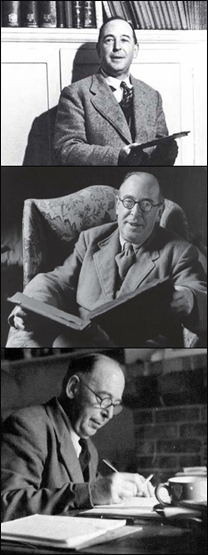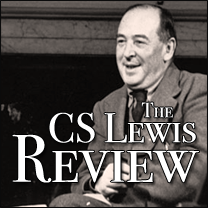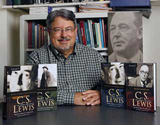
The Smile of Beauty: Heavenly Apologetics
November 24th, 2014 | Skip to comments
By Megan Robinson, CSLewis Review, Associate Editor
“It was when I was happiest that I longed most. It was on happy days when we were up there on the hills, the three of us, with the wind and the sunshine…where you couldn’t see Glome or the palace. Do you remember? The colour and the smell, and looking across at the Grey Mountain in the distance? And because it was so beautiful, it set me longing, always longing. […] The sweetest thing in all my life has been the longing—to reach the Mountain, to find the place where all the beauty came from—[…] Do you think it all meant nothing, all the longing? The longing for home?”
C. S. Lewis, Till We Have Faces: A Myth Retold, [ref]1[/ref]
As is so often the case with the writings of C. S. Lewis, he works through the same ideas in both his fiction and non-fiction. His sermon “The Weight of Glory” is an expository meditation on this deep-seated, widespread human experience of exile and longing described in the quote above, especially the desire to belong somewhere, to find one’s true home, to be welcomed “into the heart of things.” [ref]2[/ref] Most interesting is the fact that Lewis links both our desire and our experiences of beauty together as being the very signal of God himself within the world.
We regularly gasp in wonder at the natural world, and the record of human history contains works of art that draw attention and recognition as well. We recognize beauty, grasp the concept and practice it as aesthetics, but what is its ultimate source? If this “declared good” world and all its creatures are made and sustained by the Trinitarian God proclaimed by Christianity, does beauty come from that God as well? And if our human response to beauty is so often desire, what is, or ought to be, the ultimate object of that desire?
You Keep Saying That Word. . .
As Humpty Dumpty says to Alice: “When I use a word, it means just what I choose it to mean—neither more nor less.” [ref]3[/ref] Clearly, Humpty is a little cracked. But certain terms do need explanation as we begin: beauty, desire, God. Let’s begin with beauty. Like its distant cousin pornography, we know it when we see it. Perhaps because of this tendency toward distortion, Christianity historically approaches beauty with some suspicion. As Patrick Sherry observes of the general theological focus on truth/doctrine and goodness/ethics, beauty often gets bumped to “Cinderella” status, perhaps out of a fear that its sensual connections to pleasure and enjoyment might “distract and corrupt good Christians.” [ref]4[/ref]
Patristic and medieval Christian theories of beauty frequently incorporated Hellenistic philosophies, such as Plato’s Ideal Forms or Aristotle’s Formal Cause. Western culture thus inherited a rational theory of beauty as that which provides pleasure upon consideration, is rooted in an objective supra-reality, and is discernable in the moral, spiritual, and physical realms. This ordered, one might almost say static, explanation includes proportion (balanced parts), harmony (parts relate to the whole), and radiance (splendor of the whole). [ref]5[/ref] Over time, this developed into a “grand old theory” conjuring a gnostic ideal “that evokes what was lost at the Fall, yet is to come when Christ returns.” [ref]6[/ref] This calls to mind the practice in some churches of singing only the first and last verses of a hymn—one is left to wonder about the intervening journey not covered by the chorus. This classical definition of beauty has fallen on hard times these days, primarily because it is perceived as obvious and boring. [ref]7[/ref] Guthrie summarizes twenty-first century notions of beauty this way:
Kundera complains that beauty airbrushes shit. Jones complains that beauty disguises oppressive ideologies. Postmodern philosophers like Jean-Francois Lyotard believe that beauty makes a false promise of harmony in a cacophonous world. Beauty is seen as an attempt to set limits and boundaries, to comprehend an incomprehensible world. It is a futile quest for rational proportions amid the eternal flux of experience. [ref]8[/ref]
Instead of appealing to cosmos (order), contemporary purveyors of beauty and creators of art turn to an earthly chaos (disorder). They reject the idea that there is “any final form or goal, any completion toward which all things are moving,” and thus implicitly affirm a “teleological eschatology” to beauty (whether they realize it or not). [ref]9[/ref] Whereas previous ideals sought to portray a harmonious complexity of things considered good and true at the expense of actual experience, this new idea of beauty functions as an acknowledgement of what is frequently horrible, horrifying, and unlovely at the expense of anything good, true, or indeed, beautiful. If all that exists is chaos, why bother attempting to shoehorn it into any form or story?
As briefly demonstrated by these historical extremes, for a more satisfying “theory of beauty” to address both immanence (Kundera’s shit) and transcendence (classical splendor), it must hold multiple qualities in tension: objective and subjective, logic and emotion, immanence and transcendence, harmony and dissonance. I suspect “beauty-ness” is inherent to what we observe and experience, yet given the fact that one person’s treasured velvet Elvis is another’s family silver rag, some accounting for taste is necessary. We may begin to understand those things we call beautiful as possessing a pleasurable combination of sensual aspects, the intangible whole of which provokes our desire, calls forth our longing.
Merriam-Webster’s Dictionary defines desire as “to long or hope for.” Desire may be, initially or habitually, that selfish impulse to hoard for oneself (mine, my own, my precious!). Often when confronted with something beautiful, desire overwhelms us, not merely to just experience the beauty but to participate in it somehow, to “be united with the beauty we see, to pass into it, to receive it into ourselves.” [ref]10[/ref] William Dyrness suggests understanding desire as “directed toward some external event that will bring satisfaction.” [ref]11[/ref] Yet perhaps Mexican poet Octavio Paz’s explanation gets at the truth of it best: “Desire is a shot fired in the direction of the world beyond.” [ref]12[/ref]
All three definitions have in common the action of anticipation, the quality of potentiality: desire is a movement toward something that yet lacks fulfillment or completion. This movement can go in a positive or negative direction, depending on the object, but the movement of desire is not, of itself, enough. As for a definitive Christian explanation of the triune God, let’s stick with the tried and true: the Nicene-Constantinopolitan Creed. [ref]13[/ref] Or better, and shorter, yet, as the “movement in history enacted for us—supremely the story of Jesus Christ the incarnate Son, living in the Father’s presence in the power of the Spirit.” [ref]14[/ref]
Both beauty and desire are signifiers of God at work in and communicating with the world, yet they are so easily misunderstood. Beauty and desire pursued as their own ends become hedonism and idolatry, while each rejected turn into asceticism and despair. Yet before fully exploring the origin of beauty and the end of desire, we must determine whether origin and destination are, and ought to be, the same: the God who walks incognito everywhere.
The Heart of All Things
As those who live by Word and Spirit, let both call us to continual review and transformation. As mentioned above, Christian perspectives on beauty historically incorporated Hellenistic and Gnostic ideas about beauty and its relationship to God. But, a properly Trinitarian account of, well, anything must be properly theo-logical: the “logos or rationale [taking] its shape primarily from the being and acts of this theos.” [ref]15[/ref] A fundamental, mysterious truth of the Trinity is its existence of the Three: Father, Son, and Spirit, in the One: the perichoretic community of mutual self-giving and other-glorifying, i.e., love. [ref]16[/ref]
As with one person, so with all three: the “Whole offers itself in the fragment.” [ref]17[/ref] If we say that the One and the Three possess all attributes equally and perfectly, and that we consider this harmonious combination beautiful, then we may also say that the One and the Three are beauty itself. And if the perichoretic community of God is love [ref]18[/ref], then the ultimate source of beauty is the dynamic, outgoing love of each person of the Trinity for the other, clearly visible in the fragment of, and measured by, the incarnation and resurrection of Jesus Christ.[ref]19[/ref] Hence Dostoyevsky’s famously paraphrased line: “Beauty will save the world.”
So what can we then understand as a theological account of beauty? Beauty rooted in the Trinity: counteracts a gnostic devaluation of beauty’s sensuality by testifying to God’s faithful commitment to what he created, and to creation as “other” than himself; [ref]20[/ref] continually returns to Christ as the one in whom all creation reaches its eschatological goal;[ref]21[/ref] continually returns to the Spirit as the one who presently works among us to anticipate that goal as made possible in the Son[ref]22[/ref], and recognizes that the beauty we experience now is a Spirit-given glimpse of the beauty yet to come; delights in the diversity and multiplicity of the many; recognizes contingency and unpredictability in the world,[ref]23[/ref] and takes seriously evil’s sheer irrationality, but also recognizes the good wildness that comes with the outpouring of love; and, you guessed it, provokes desire.[ref]24[/ref]
Nowhere else in Scripture is the link between the beauty of God and all created beauty, and the response of desire, as strong as in the Psalms: 23:6; 26:8; 63:2; 84:10, among others. Given these definitions of beauty and desire, it is unsurprising that humans create a “diabolical beauty,” harmonious compositions that evoke desire in others, and yet confuse and distract us from ultimate beauty. Yet if we understand beauty in its proper theo-logical light, we may begin to see it as a form of divine revelation. One that by common and Spirit-ed grace allows glimpses of the Whole within the fragments, which we can follow back up the “sunbeam” of the incarnate and written Word to its source.[ref]25[/ref]
The End of All Things
I intended to conclude with a systematic exposition of our response of desire at an event of beauty, and how the ordering of desire, whether rightly or wrongly, depends upon our awareness, recognition, and acceptance of the ultimate source of beauty.[ref]26[/ref] Yet the steady global cycle of violence and tragedy – not just the inevitable natural disasters, but war, rape, slavery, petty, escalated arguments: a never-ending litany of man’s inhumanity to man – forces us to the question of the good of beauty. What is beauty to us? If a common perception is that beauty is a lie or a false promise about “the way things are and are yet to be,” what purpose can it serve in the face of such horror and grief? Does beauty even have a place in the midst of such overwhelming here-ness? It has to. But beauty alone provides little comfort.
Immediate attempts to reconcile beauty and chaos mock our pain and grief, cruelly rationalize away the irrational evil that so haunts the world. Yet we cannot escape the fact that pain and grief, along with beauty, arouse desire: that shot in the direction of the world beyond. In a long history of violent shots between worlds, we find in the crucifixion of Christ the pivotal moment that holds together pain and grief and beauty, and in that tension breaks down the door on which we have spent our lives knocking. For beauty is also incomplete: it is not the whole message. We often have the strange sense of being “mere spectators,” eavesdroppers of rumors and faint echoes that what we see here, however beautiful and unlovely, is not all there is.[ref]27[/ref] All these scattered rumors have got to lead somewhere, through some door. And so, we desire, we long, we expect, we hope.
And if our desire leads us through brothels in the process of trying to convince ourselves that beauty lies and only chaos exists, perhaps we hope against hope that the story hinted at is not too good to be true: that Love himself became Immanuel, became immanent in the world he made.[ref]28[/ref] And after the cross comes the crown. The resurrection of Christ completes the message of beauty: the long-expected end of our desire is the final defeat of chaos.[ref]29[/ref]
If Christ’s crucifixion breaks open the door, his resurrection by the Spirit enables us to walk through.[ref]30[/ref] It is not much of a stretch to say that, in following the fragments and rumors of beauty, the Spirit quickens our ears to hear “news from a far-off country.”[ref]31[/ref] As Kevin Vanhoozer reminds us, the Spirit also renews the “communicative capacities” of those who experience and desire the beauty made visible in Christ to “witness to the word of life, and […] communicate life itself.”[ref]32[/ref]
The world is full of many grief-stricken and unlovely things, and we rightly rebel against them.[ref]33[/ref] The enemy would have us believe that all we can expect is chaos; beauty is a foolish thing to long after; all our protests are in vain.[ref]34[/ref]
To face the unspoken unguarded thoughts of habitual hearts
a vanguard of electricians a village full of tarts
who say you must protest you must protest
it is your diamond duty
ah but in such an ugly time the true protest is beauty [ref]35[/ref]
The heartbreak of this world is that all good things are twisted away from their original beauty; the joy of it is that all twisted things who so desire it are remade at the end. If we come to understand Christ as the visible form and the end of beauty, we see at last the “place where all the beauty came from.” To respond to beauty with desire now means to respond to the Trinitarian God with pain-shot joy. For “the whole man is to drink joy from the fountain of joy,”[ref]36[/ref] and the sensual pleasures of beauty in this world remind us that we are not left here without hope [ref]37[/ref]—the ultimate protest. For the beautiful one seated on the throne at the heart and the end of all things cries out, “Behold, I make all things new!”[ref]38[/ref]
NOTES
1 C.S. Lewis, Till We Have Faces: A Myth Retold, (San Diego: Harvest Books, 1980), 74-76.
2 ibid., 41.
3 Lewis Carroll, Through the Looking Glass, Chapter 6. Lenny’s Alice in Wonderland Site. http://www.alice-in-wonderland.net/books/2chpt6.html (accessed December 8, 2012).
4 Patrick Sherry, Spirit and Beauty, (London: SCM Press, 2002), 18-19.
5 Sherry, chapter 4 “God’s Beauty.” Bruno Forte, The Portal of Beauty: Towards a Theology of Aesthetics, (Grand Rapids: Eerdmans, 2008), 16-17.
6 E. John Walford, “The Case for a Broken Beauty: An Art Historical Viewpoint,” The Beauty of God: Theology and the Arts, eds. Daniel J. Treier, Mark Husbands, and Roger Lundin, (Downers Grove: IVP Academic, 2007).
7 Ibid., 102.
8 Steven Guthrie, Creator Spirit: The Holy Spirit and the Art of Becoming Human, (Grand Rapids: Baker Academic, 2011), 186.
9 Ibid., 187.
10 Lewis, 42.
11 William Dyrness, Poetic Theology: God and the Poetics of Everyday Life, (Grand Rapids: Eerdmans, 2011), 32.
12 Ibid.
13 “I believe in One God, the Father Almighty, Maker of Heaven and Earth, and of all things visible and invisible. And in one Lord Jesus Christ, the Son of God, the Only-Begotten, begotten of the Father before all ages; Light of Light; True God of True God; begotten, not made; of one essence with the Father, by Whom all things were made; Who for us men and for our salvation came down from Heaven, and was incarnate of the Holy Spirit and the Virgin Mary, and became man. And He was crucified for us under Pontius Pilate, and suffered, and was buried. And the third day He arose again, according to the Scriptures, and ascended into Heaven, and sits at the right hand of the Father; and He shall come again with glory to judge the living and the dead; Whose Kingdom shall have no end. And in the Holy Spirit, the Lord, the Giver of Life, Who proceeds from the Father; Who with the Father and the Son together is worshipped and glorified; Who spoke by the prophets.”
14 Jeremy S. Begbie, “Created Beauty: The Witness of J. S. Bach,” The Beauty of God: Theology and the Arts, eds. Daniel J. Treier, Mark Husbands, and Roger Lundin, (Downers Grove: IVP Academic, 2007), 22.
15 Ibid., 20.
16 John 8:50, 54; 13:32; 17:1, 5, 22, 24; 13:31-32; 14:12; 17:1, 4; 18:19; 16:14
17Forte, vii.
18 I John 4:8
19 Ibid., 22.
20 Gen. 1
21 Isa. 9:6-7; Luke 3:16; Acts 19:4
22 2 Cor. 5:16-18
23 Rom. 8:20-22
24 Begbie, 25-31.
25 John 1:14; II Tim. 3:16-17
26 Rom. 8:5
27 Lewis, “The Weight of Glory,” 30-31.
28 Phil. 2:7-9
29 Col. 2:9-10; Eph. 1:22-23, 4:10
30 Rom. 8:11; Acts 2:24, 32-33
31 Lewis, “The Weight of Glory,” 31.
32 Kevin Vanhoozer, Remythologizing Theology: Divine Action, Passion, and Authorship, (Cambridge: Cambridge University Press, 2010) 267-8. Rom. 8:11; I Cor. 15:35-49; Jn. 17:3
33 Rom. 8:20-25
34 Eph. 6:12
35 Phil Ochs, liner notes to Pleasures of the Harbor, ht35 tp://web.cecs.pdx.edu/~trent/ochs/pleasures.html, (accessed December 14, 2012).
36 Lewis, “The Weight of Glory,” 44.
37 I Pet. 1:3-6
38 Rev. 21:5
BIBLIOGRAPHY
Begbie, Jeremy S. “Created Beauty: The Witness of J. S. Bach.” The Beauty of God: Theology and the Arts, eds. Daniel J. Treier, Mark Husbands, and Roger Lundin. Downers Grove: IVP Academic, 2007, 19-44.
Dyrness, William A. Poetic Theology: God and the Poetics of Everyday Life. Grand Rapids: William B. Eerdmans Publishing Co., 2011.
Forte, Bruno. The Portal of Beauty: Towards a Theology of Aesthetics. Grand Rapids: Eerdmans, 2008.
Guthrie, Steven. Creator Spirit: The Holy Spirit and the Art of Becoming Human. Grand Rapids: Baker Academic, 2011.
Lewis, C. S. “The Weight of Glory.” The Weight of Glory: And Other Addresses. San Franscisco: HarperSanFrancisco, 2000, 25-46.
—-. Till We Have Faces: A Myth Retold. San Diego: Harvest Books, 1980.
Sherry, Patrick. Spirit and Beauty. London: SCM Press, 2002.
Vanhoozer, Kevin Vanhoozer. Remythologizing Theology: Divine Action, Passion, and Authorship. Cambridge: Cambridge University Press, 2010.
Walford, E. John. “The Case for a Broken Beauty: An Art Historical Viewpoint.” The Beauty of God: Theology and the Arts, eds. Daniel J. Treier, Mark Husbands, and Roger Lundin. Downers Grove: IVP Academic, 2007, 87-109.





1. Beauty, like space and time, is directly and immediately known, and can not be reduced to any other aspect of reality or explained in terms of any other aspect, although its interrelationship with all other aspects can be shown. Just as Augustine said he knows what time is but cannot define it, so the same goes for beauty and the core of all the other aspects of reality: number, space, time, energy, life, personhood, etc.
2. It is very sad that very few systematic theologians include beauty among the attributes of God. Jonathan Edwards is about the only major theologian who does so. [see Roland Andre Delattre’s “Beauty and Sensibility in the Thought of Jonathan Edwards”.]
AND finally, 3. NO theologian I know of includes the all important fact that God is Interesting. Even the supposedly great poet John Milton does not seem to realize this, which is why he is often accused of portraying Satan as being more interesting than God. Ditto with playwrights, which is the reason that one astute observer said a long time ago, that in most plays the Devil has all the best lines!! Lewis recognized the importance of this principle — however I do not remember where he said it. His best literary demonstration of this was in Perelandra where the bad guy is shown at the end to be ultra-boring!!
Anyway, contra popular opinion, it is righteousness that is interesting, and wickedness that is boring.
Hope you find this to be interesting!
Sincerely,
Forrest
Oh, btw, God is self-verificational. Apologetics (as the term is normally used) is guilty of, placing “God in the Dock”, as Lewis puts it. F.
Comment by Forrest Schultz — 12 August 2014 @ 8:02 AM